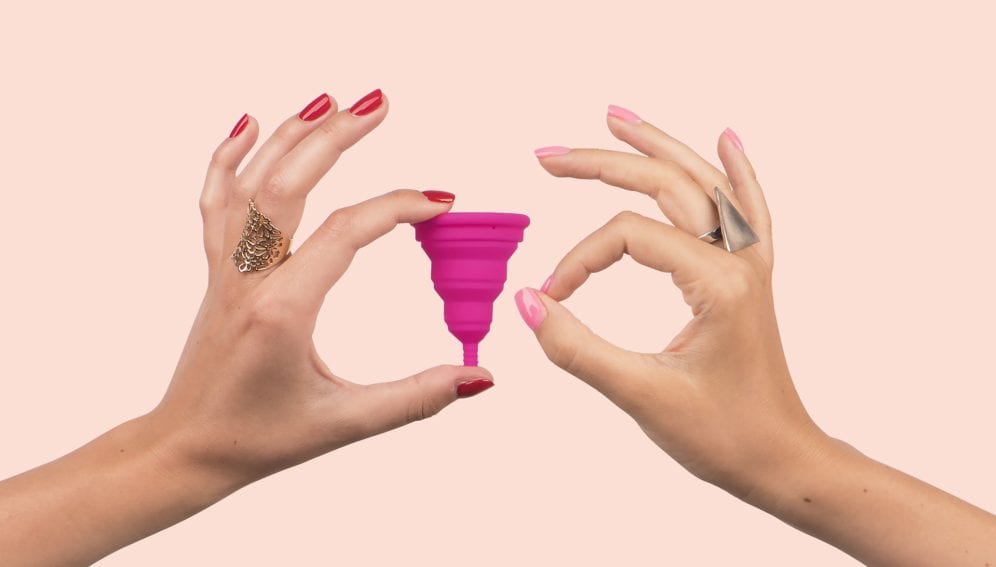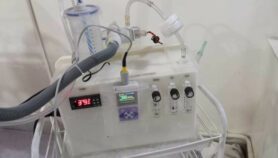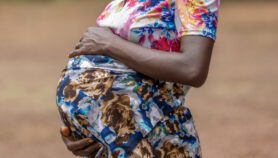29/07/19
Menstrual cups could be effective alternative for girls

By: Gilbert Nakweya
Send to a friend
The details you provide on this page will not be used to send unsolicited email, and will not be sold to a 3rd party. See privacy policy.
[NAIROBI] Menstrual cups may be effective alternatives to other menstrual products but girls and women need education on proper use to limit adverse effects such as difficulty with removal, a study has found.
Nearly half of the female population globally are of reproductive age but many girls and women have “limited options for affordable menstrual products”, UNICEF estimates show.
Menstrual cup is a small, flexible device made of silicone or latex rubber that catches and collects menstrual blood flow but researchers say that it is often not listed among menstrual products.
“We perceived a lack of awareness about the menstrual cup and a lack of knowledge on what you can expect as potential problems when using the menstrual cup,” says Anna Maria van Eijk, lead author of the study and a senior clinical research fellow at the UK-based Liverpool School of Tropical Medicine.
“If women use it, over time it will reduce their costs for sanitary pads, soap and water.”
Anna Maria van Eijk, Liverpool School of Tropical Medicine
The study which was published this month (16 July) in The Lancet Public Health is the outcome of a review of 43 studies that were identified from 436 records in ten databases including PubMed, Cochrane Library and Web of Science. Researchers assessed outcomes of interest such as menstrual blood leakage when using the menstrual cup, acceptability of use, comfort of wearing, intention to use in future and serious adverse events.
The 43 studies involved 3,319 participants in several countries including Brazil, Canada, Colombia, Ghana, India, Kenya, Nepal, South Africa, Tanzania, Uganda and Zimbabwe. Researchers also identified 199 brands of menstrual cups either as cervical or vaginal cup in 99 countries, with prices ranging from 72 US cents to nearly US$47.
“We found no increased infection risk (reproductive tract or systemic infection) associated with use of a menstrual cup among European, North American and African women and girls compared with other menstrual products,” says the study. “Difficulty with removal that required professional assistance — an adverse event we did not anticipate — was reported 47 times for cervical cups …and twice for vaginal cups.”
The study adds that about 70 per cent of participants in 13 of the reviewed studies intended to continue using the menstrual cups.
Of four studies that directly compared leakage of menstrual cups and usual products, “the leakage between products was similar in three studies and significantly less among menstrual cups for one study”, the findings show.
Van Eijk says that menstrual cups have been used successfully in less optimal sanitary conditions such as refugee camps with increased comfort compared with using rags, pads and other products.
It is important for women in Sub-Saharan Africa and other regions to know all the options for addressing menstruation, and not be limited to disposable or reusable pads, she explains.
“Women may decide for themselves if they want to give it a try or not,” says van Eijk. “If women use it, over time it will reduce their costs for sanitary pads, soap and water.”
The study calls on policymakers to consider menstrual cup in menstrual health programmes and be included in puberty education materials.
Caroline Kibiru, a Nairobi-based research scientist and reproductive health expert, says that several studies conducted among girls in low-income countries show that some of the girls introduced to menstrual cups and adequately trained prefer them because they are reusable over a period of about ten years. This, she says, makes them cheap to use in the long run.The lower risk of leakage, Kabiru tells SciDev.Net, “gives girls more confidence to participate in activities that they otherwise would not feel comfortable taking part in during their periods because of the fear of embarrassing leaks”.
This piece was produced by SciDev.Net’s Sub-Saharan Africa English desk.
References
Anna Maria van Eijk, and others Menstrual cup use, leakage, acceptability, safety, and availability: a systematic review and meta-analysis (The Lancet Public Health, 16 July 2019)













